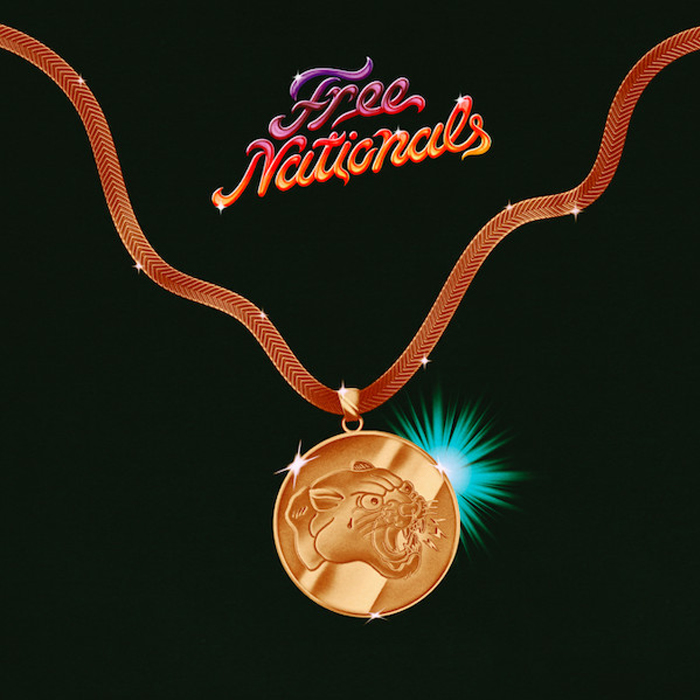A Clearing in the Streets

A ten-sided plywood structure surrounding a miniature meadow of indigenous vegetation, "A Clearing in the Streets" is a temporary landscape in downtown Manhattan's Collect Pond Park. The installation, commissioned by the Public Art Fund, reflects artists Julie Farris and Sarah Wayland-Smith interest in creating momentary organic interventions within the urban environment.
Their work arrives at a moment when both public demand and municipal support for greening the city appear to be at an all time high. Still, grand public projects, like the High Line, often take years to come to fruition. Without a doubt, landscape designers such as Farris and Wayland-Smith stand to play an immediate, increasing role in shaping the experience of city living through small-scale installations. Cool Hunting recently had the opportunity to ask the designers a few questions about their practice and their dreams for New York.
One of your interests lies in exploring ways to re-introduce nature into the dense urban environment. As the global populace moves more and more toward urban habitation, do you think we need to broaden our definition of nature itself? After all, isn't the built environment arguably a natural product of humankind?
Yes, I think we would agree that our collective urban vision is at a point where we need to broaden the definition of “nature" in the city. While there may not be many opportunities to build large-scale parks, there is tremendous potential for even very small landscapes or natural environments to have a strong impact on urban residents. Our work explores temporary landscapes, insertions of nature into the urban environment, that have the potential to change the way we think about nature and our relationship to it.
We are also interested in using innate processes in nature to help resolve some of the environmental problems of large cities. For instance, we can use vegetation to absorb rainwater and release it into the air, lowering urban temperatures. In this way, nature can become a construction material. Our meadow is a constructed slice of nature. We carved out a small space in a paved plaza and brought in topsoil and seedlings to create a context for this natural cycle of growth that takes place.
There are few opportunities within New York to introduce large-scale organic landscapes. Apart from haphazard attempts at "greening" the city by plunking down planters, how can the city respond with creativity to our need to stay connected to the "natural" world?
Interview continues with more images after the jump.
It is without question that most city residents crave the most fundamental natural elements—trees, grass, flowers—as these are elements that are so connective and universally enjoyed on an immediate, visceral level. However, landscapes in the urban context often engender intense feelings of communal ownership, as they are perceived as permanent and unchanging. This sense of permanence is often a huge constraint, both economically in terms of long term associated maintenance costs, but also in terms of freedom of design. The concept of a temporary landscape in cities gets around these constraints.
Landscapes do not necessarily need to be permanent and in fact are often even more powerful and more indelibly imprinted on our memory if they are not. Landscapes are organic and as temporary installations can be recycled and reconfigured in new locations. Much like the flux and transformation in the cycle of the city itself, landscapes are parallel ecosystems constantly changing and adapting to their environment.
Can you give a few examples of recent projects that exemplify your approach to temporary, organic installations within the city?
In the past few years there have been some compelling temporary installations that incorporate organic materials. Public Farm 1 at PS 1 in Long Island City merged sculptural installation and urban farming and Robert Smithson's "Floating Island" created a small piece of a romanticized landscape and set it in motion on the rivers around Manhattan. We also admire projects like Paris Plage, providing a temporary beach along the Seine for residents to sunbathe on lounge chairs in sand in the center of Paris. Projects that make use of the waterfront, even for a temporary period, are much needed in this City. Although not temporary, some permanent parks have started to use more naturalistic plantings with native species, i.e. some gardens along the Hudson River Park have native plantings that require little maintenance and are very attractive.
What would your ideal New York look like?
Sarah: In my ideal New York there would be a much stronger interconnection between nature and the built environment. This could begin to be achieved with many more green spaces, vegetated rooftops and walls, temporary landscape installations, and increased access to the waterfronts. Living in the city cuts one off from seeing the cycles of nature, but art and design can frame our experience of the natural world and bridge that gap; spaces such as The High Line and James Turrell's "Meeting" at PS 1 achieve this.
Julie: I imagine temporary landscapes could be constructed in areas in desperate need of green space—almost as an open air series of landscapes galleries built on public and or private lands, construction sites, or interstitial spaces—that explore or reveal a specific aspect of a site or natural element and simultaneously provide much needed green recreational space. These landscapes could inhabit sites for a season or two, offering residents programmed events, and attracting people to them. Afterward they could be moved to a new site and reconfigured as something new, creating an exchange of landscapes across the five city boroughs and always addressing the unique conditions of each site.
"A Clearing in the Streets"
Through October 2009
Collect Pond Park
New York, NY 10013 map












